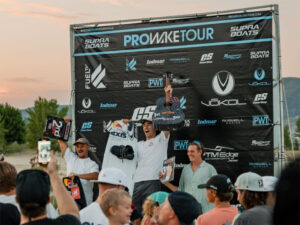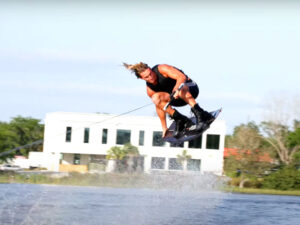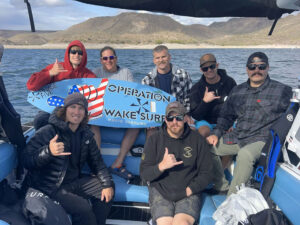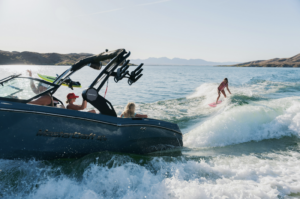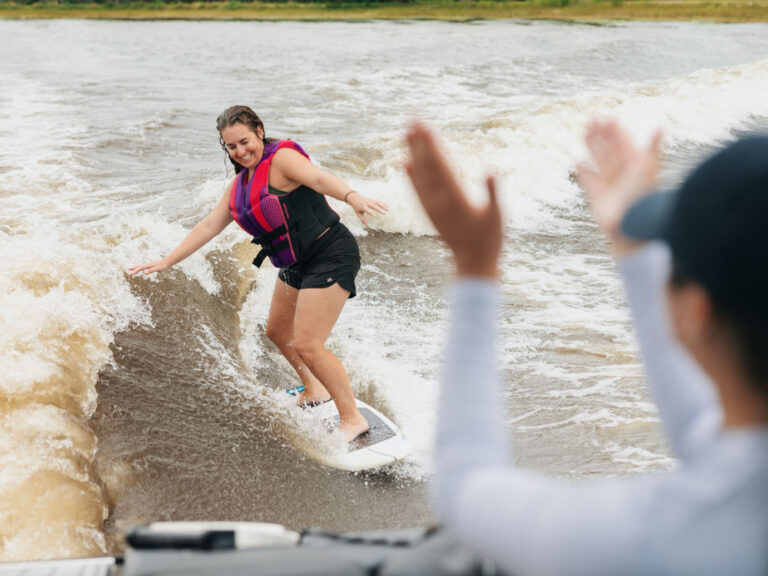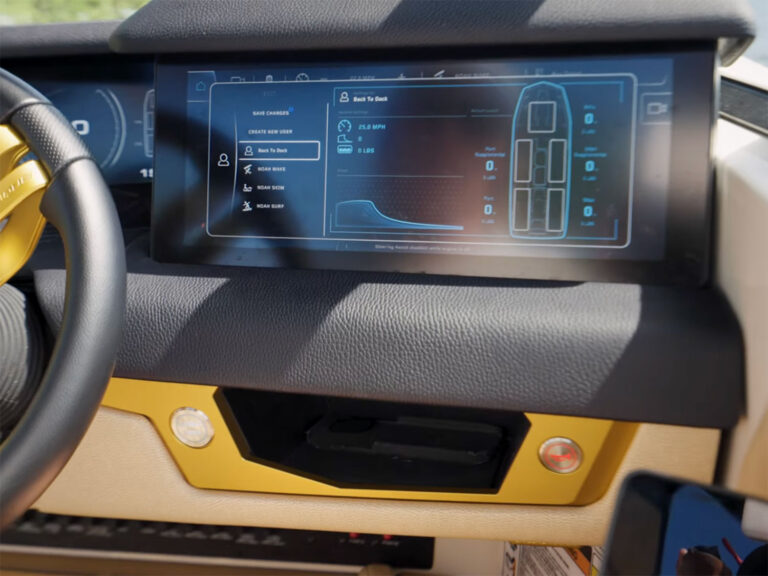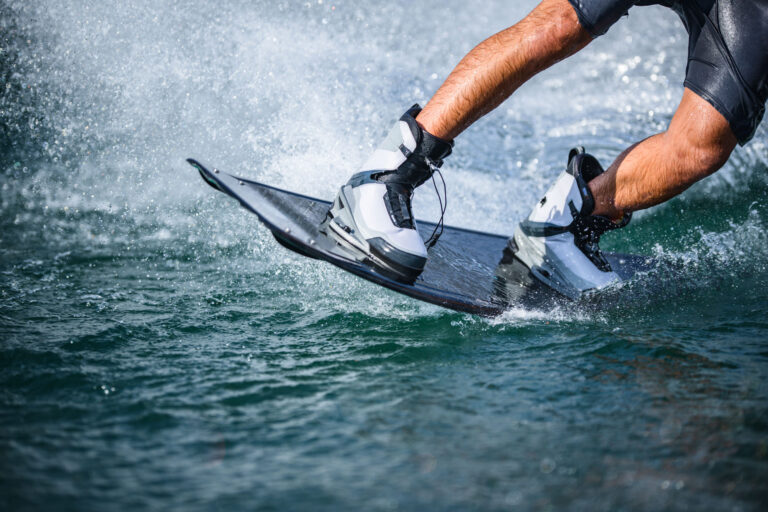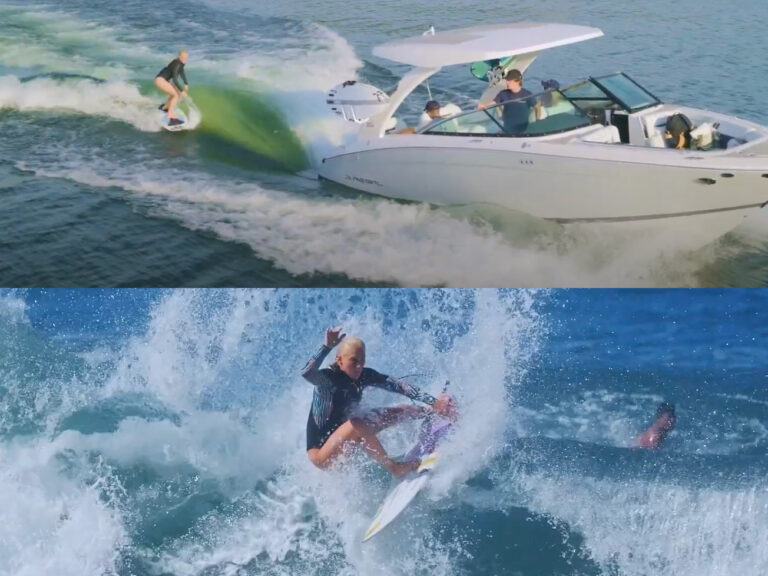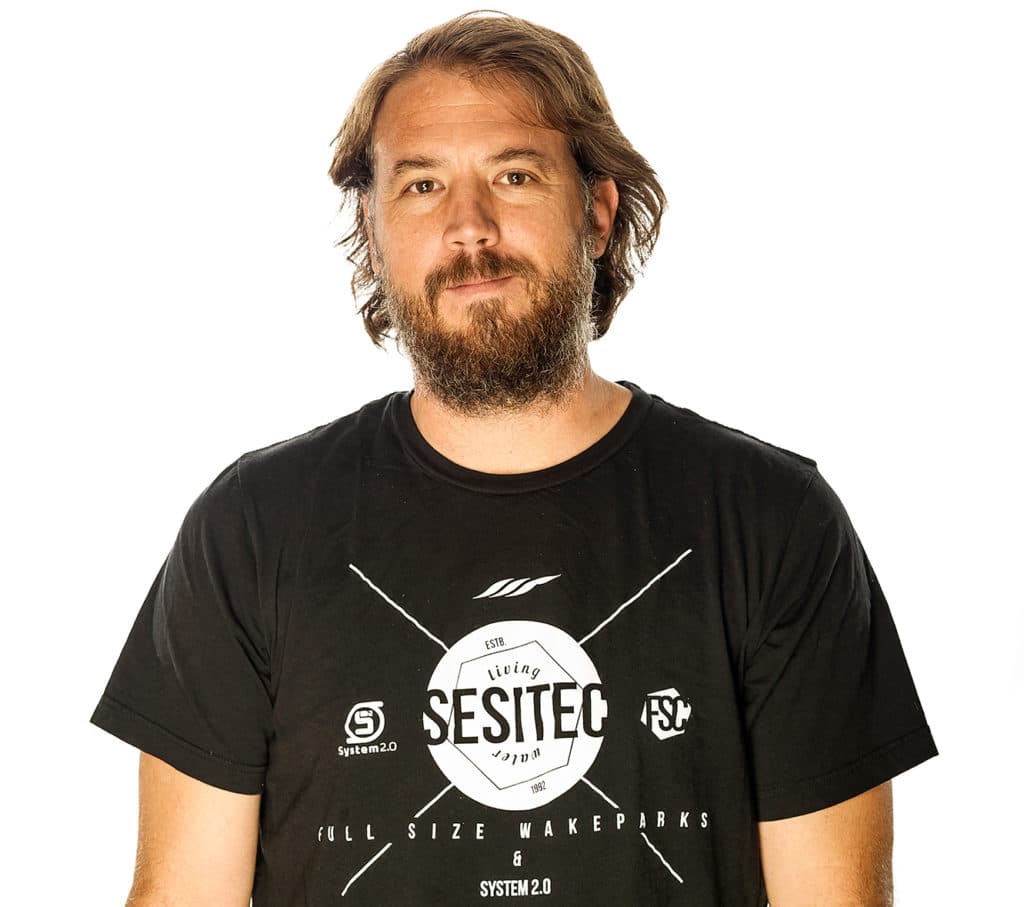
“Icon” is a term often thrown around without much weight in our sport. At times it becomes a badge bestowed on those who have stood the test of time in our industry and managed some form of career life support. Sure, there are some people whose contributions redefined what it meant to be involved in wake sports, and whose presence could only be described as iconic. Yet even in this elite group, how many athletes, innovators, creative forces and engineers can actually claim to have completely redefined what it meant to be involved in watersports at large? Pat Panakos has spent the past 17 years literally building up wakeboarding and wakeskating. Whether with hammer and nail, welder or cable system, Pat has changed the way our sport looks in the most physical sense and given it a depth that has brought about a new era of sustainability.
For those who somehow aren’t familiar with Pat Panakos, his career in wakeboarding has spanned more than 20 incredibly productive years. After first getting involved in the sport by stealing his brother’s student ID and getting free pulls from Bruce Clem at the University of Florida, Pat moved to Orlando and became part of the influential Lake Pickett crew of riders, which included Scott Byerly and Gator Lutgert. Coming from a skate background and being influenced by guys like Byerly and Thomas Horrell, Pat began looking beyond the boat’s wake in terms of where the sport could go, and he started building rails. A little side work from a neighborhood contractor gave him a building skill set that made him the go-to guy for creating obstacles that blurred the lines of wake, snow and skate. This new infatuation with rails culminated in the Carnival of 1999, a rail-only event symbolically held on Byerly’s birthday and presented by Panakos. The Carnival was held at a small lake just outside east Orlando, and when the event was over, Pat realized that the concept of a rail park was something he couldn’t just dismantle. He partnered with Byerly, and thus came about the Projects, a rail-only wake park and camp that was truly the first of its kind.
Since creating the groundwork for the rail-driven style of riding we all know today, Pat has gone on to help usher in the era of wake parks. After first getting involved with the Wake Park Project and exclusively distributing Sesitec and Unit Parktech products, Pat has now furthered his involvement through Waypoint, his new venture, where he has taken over not just the building but also the operation of wake and recreational parks. With one park already finished (Hangar 9, outside Houston) and more on the way, we caught up with the father of two to get a little insight into the mind of the man who has built the way we ride.
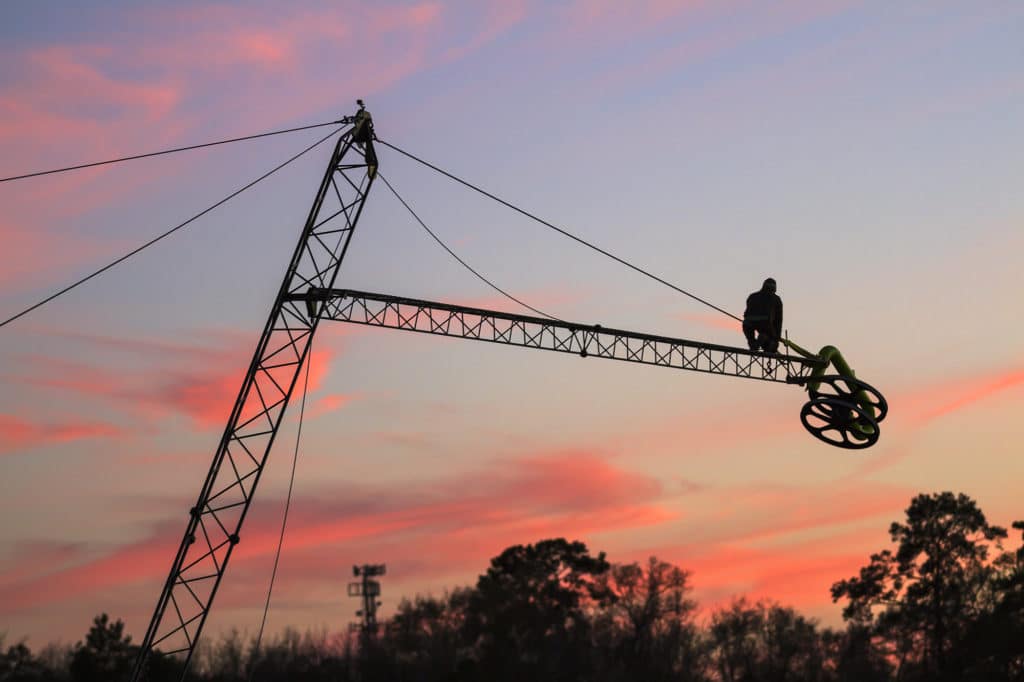
When did you realize that cable parks were where you wanted to focus your energy?
Since I lived in Orlando, all I knew was OWC. So I didn’t really have much experience with cable parks and really wasn’t that interested until Shawn Perry pushed me to go to CWC. This is when he worked with the WWA, and they were doing an event out there and he wanted me to experience it. I remember the first morning there, my flight got in at like 6, and I went straight to the cable and … my first lap out there, I was laughing. I was thinking that was a completely different feel from what I thought cable was all about.
It turns out a company called Sesitec had designed the park. After riding that day … my mind was just going: How do I jump into this world and build cable parks? It started clicking about what cables could actually do — not just the atmosphere and how much fun it could be, but how many people it could introduce to the sport.
So I started thinking about it when I got home, and I remember at my bachelor party, I was having dinner and Matt Hickman was sitting next to me. I remember turning to him and telling him about CWC and saying that I wanted to build parks, and I was so excited about it. I was just kind of unleashing on him, telling him how inspired I was. At the time he was putting together a team to do the North American distribution for Sesitec cables, so that’s when Matt Hickman and I partnered up and started working with Sesitec to handle North America for them.
Are you happy with what people have done with the System 2.0 technology?
One hundred percent I am happy and excited about what it did for the sport. Just to look around and see things like Battle Falls, it’s such an amazing place, and so much stuff went down there that helped push wakeskating. You look around at places like Jibtopia, Henshaw’s [Area 52], Lake Ronix, Shredtown, and there are places like that all over the U.S. and world now. The progression it pushes and the accessibility it allows are why I think growth is happening again.
You’re involved in so many different things. How is your new company, Waypoint, different from the Wake Park Project?
The Wake Park Project is there to provide assistance for our clients who want to go out and build parks or want to have a cable system or want to do an event. Waypoint is a whole different piece of what we want to do. Looking back, it kind of hit me, the impact I had on kids’ lives when they came to my camp [the Projects]. I have had kids who have come back and told me: “Thank you so much for that week. You don’t know, but it changed my life. I was going down a wrong way, and after that week, I got off drugs and got back into college. So thank you for that.” To hear what you have done for a person’s life is pretty impactful. It’s so much different from “You built something cool” or “You set up this amazing ride” or “You helped my business.”
So Waypoint is us giving back and serving our community. We can make our biggest impact in the community by working with kids and families. We aspire to teach life lessons and life philosophies, developing and reinforcing a positive set of character traits, and we want to do that through programs utilizing sports and recreation. What I know best is cable-park wakeboarding and wakeskating, so that’s at the core.
How do you gear the parks to impact the local communities?
Programs and events. Programs in place are the biggest thing, but first you have to have infrastructure. That’s what we focused on when we built Hangar 9 in Conroe, Texas. We put in a full-size cable and a 2.0, and now we can start to get together after-school programs and summer camps. Then we’ll add more infrastructure next year.
It’s the same thing with SunWest. SunWest is a county park in Pasco County [just north of Clearwater, Florida] that we are running. We have full-size cables going up this month. We already have aqua parks, paddleboarding and kayaking. We have WaterMat yoga programs and beach exercise programs. We have 24 beach volleyball nets, and we had an NCAA women’s volleyball tournament out there, so it’s pretty cool to see all the things going on at that park.
What are some park projects you haven’t been a part of that you admire?
That’s tough. There are a lot of places we provide the cable for but where we aren’t really involved in the actual project. Like at Henshaw’s, we provided the System 2.0, but he did everything else. Or Reed Hansen with Battle Falls. I mean, he built that thing by himself, and it’s amazing. One of my top three favorite buildouts.
It has to be cool to give these guys the tools and watch what they can accomplish.
Yeah, that was a big thing for me coming to grips with shutting down the Projects. At the same time, the Wake Park Project was blowing up and helping all these places get open. We have done a little over 100 System 2.0 parks now and 15 full-size cables. It was still weird to kind of turn off the Projects. The Projects was this idea of research and developing that side of the sport, but there is just so much going on now with our sport, it didn’t seem like there was a need for it anymore. The Projects was this idea lab and isn’t necessary [now] because it’s everywhere, it’s wildfire.
So now our focus is giving people the tools. The System 2.0, Unit features, how to build a park, design and management help — we can pass along so much information, and that’s what the Wake Park Project is. Then Waypoint is our passion to help people. So looking at how much amazing stuff is out there, it made it easy to shut off the Projects.
The Projects will always be an idea. I think it will always be there in my mind.
It’s interesting you say that. It’s like it lives on. You can’t kill an idea.
Are you happy with the way that park riding is going? The overall look and style?
Yeah! It’s progressing and changing and getting technical. For a while there we lost some of the big stuff, and now it’s coming back again. It’s so interesting to follow the things these guys are doing. It’s getting really good and really technical.
What is your proudest accomplishment in watersports so far? You obviously have done so much, but if you could say one thing, what would it be?
That’s hard. It sounds weird, but probably that kid who came to the camp who got off drugs and went back to college and has a life now.
Do you ever trip out looking back and kind of seeing what you helped create? You tangibly redefined the look of the sport.
It blows me away just thinking about hitting that Wake Tech feature back in the day, a floating rainbow rail, and how I thought it was amazing — to look back at that and see how far we have come and what we have now. It’s no small feat, and [it can’t be] attributed to one person. So many people put so much hard work in and so much passion to accomplish that. I always think to myself that if I were a grom today and got to show up at a park and hit all these Unit features, that would be so amazing. It took so many years and so much hard work from so many people. It’s kind of what we wanted when we got into the sport, and now it’s here.
